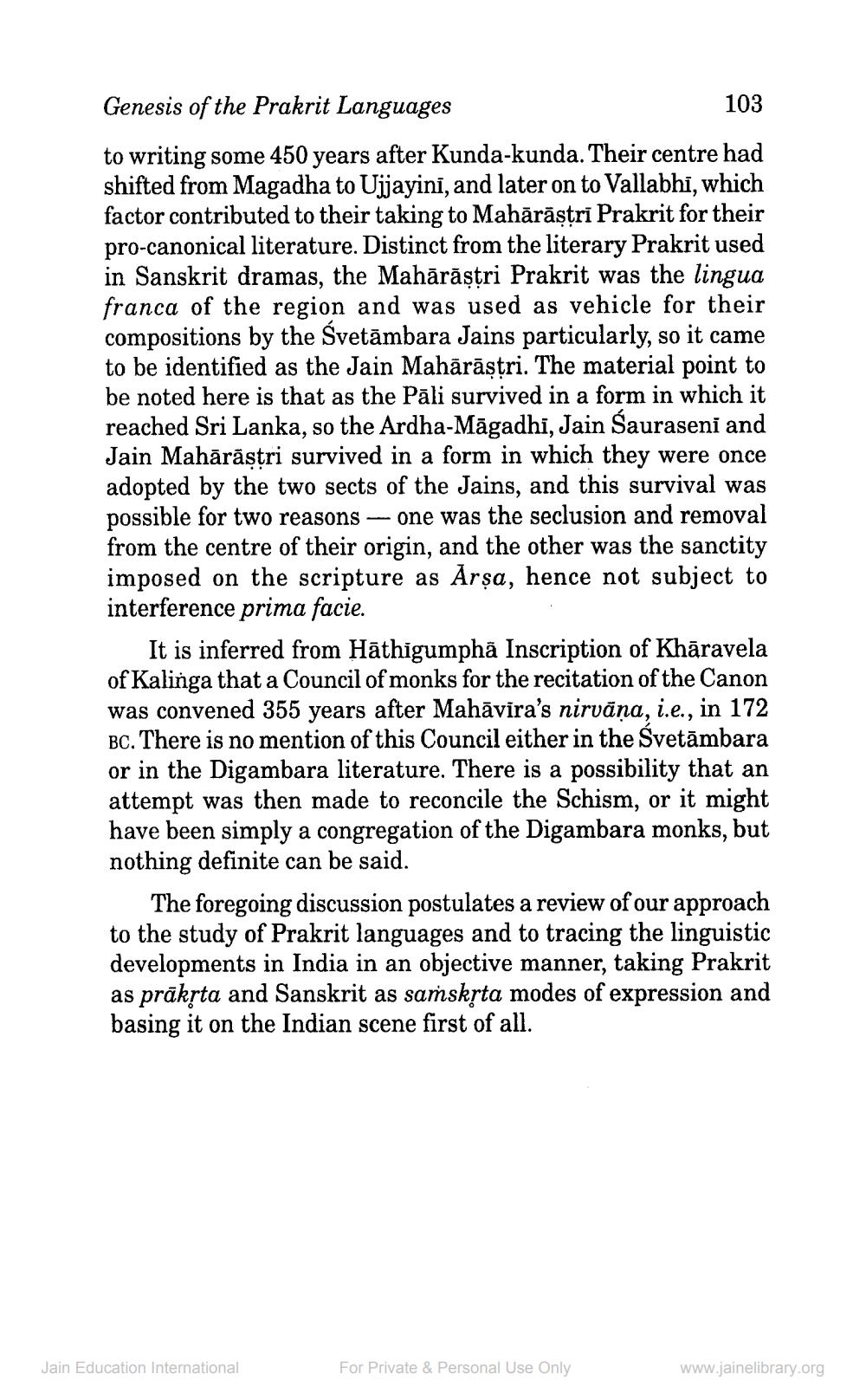________________
Genesis of the Prakrit Languages
103
to writing some 450 years after Kunda-kunda. Their centre had shifted from Magadha to Ujjayini, and later on to Vallabhi, which factor contributed to their taking to Mahārāṣṭri Prakrit for their pro-canonical literature. Distinct from the literary Prakrit used in Sanskrit dramas, the Mahārāṣṭri Prakrit was the lingua franca of the region and was used as vehicle for their compositions by the Svetambara Jains particularly, so it came to be identified as the Jain Mahārāṣṭri. The material point to be noted here is that as the Pali survived in a form in which it reached Sri Lanka, so the Ardha-Magadhi, Jain Śauraseni and Jain Mahārāṣṭri survived in a form in which they were once adopted by the two sects of the Jains, and this survival was possible for two reasons one was the seclusion and removal from the centre of their origin, and the other was the sanctity imposed on the scripture as Arṣa, hence not subject to interference prima facie.
-
It is inferred from Hathigumpha Inscription of Khāravela of Kalinga that a Council of monks for the recitation of the Canon was convened 355 years after Mahāvīra's nirvāṇa, i.e., in 172 BC. There is no mention of this Council either in the Svetāmbara or in the Digambara literature. There is a possibility that an attempt was then made to reconcile the Schism, or it might have been simply a congregation of the Digambara monks, but nothing definite can be said.
The foregoing discussion postulates a review of our approach to the study of Prakrit languages and to tracing the linguistic developments in India in an objective manner, taking Prakrit as prakṛta and Sanskrit as samskṛta modes of expression and basing it on the Indian scene first of all.
Jain Education International
For Private & Personal Use Only
www.jainelibrary.org




